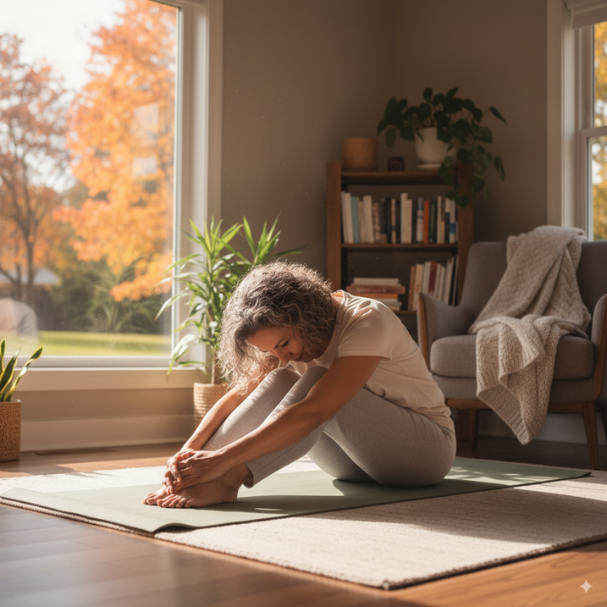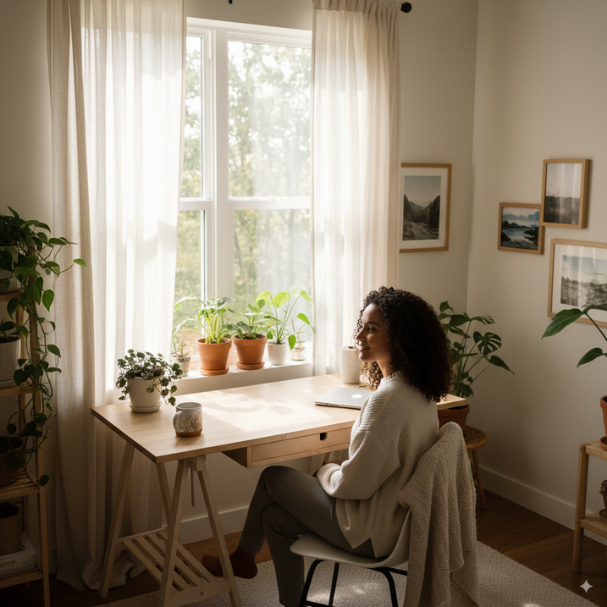Seasonal changes bring shifts in weather, daylight, and routines. While many people welcome the cozy winter months or the warmth of summer, others find that certain times of the year trigger unexpected emotional challenges. Seasonal Affective Disorder (SAD) is a type of depression that follows a recurring seasonal pattern, often emerging in the fall or winter and lifting as spring approaches. Learning how to cope with SAD can make a significant difference in maintaining emotional well-being, productivity, and quality of life.

This article explores what SAD is, why it occurs, and how people can develop healthy coping strategies to manage its impact without relying on medication.
What is Seasonal Affective Disorder (SAD)?
Seasonal Affective Disorder is more than just “winter blues.” While occasional feelings of sluggishness during darker months are common, SAD involves persistent low mood, lack of motivation, changes in sleep and appetite, and difficulty concentrating. For some, symptoms appear in late autumn and last until early spring. Others may experience summer-pattern SAD, which is less common but still challenging.
The condition is linked to biological and environmental factors, particularly reduced exposure to natural sunlight during shorter days. This can disrupt the body’s circadian rhythm and influence the production of melatonin and serotonin, two chemicals that regulate mood and sleep.
Common Signs and Symptoms of SAD
Recognizing the signs of SAD is the first step toward effective coping. While the severity can vary, many people experience:
-
Persistent feelings of sadness or low mood tied to specific seasons
-
Decreased energy and fatigue despite adequate rest
-
Difficulty concentrating or staying motivated
-
Reduced interest in social activities or hobbies
-
Sleep disturbances, such as oversleeping or restlessness
-
Changes in appetite, including cravings for carbohydrate-rich foods
-
Irritability, agitation, or feelings of hopelessness
Because these symptoms can overlap with other conditions, understanding their seasonal nature is essential in identifying SAD.
Why Seasonal Changes Affect Mood
The human body is naturally attuned to light and dark cycles. Reduced daylight during fall and winter can disrupt circadian rhythms, creating challenges in how the brain regulates hormones and neurotransmitters. For example, serotonin levels tend to drop with decreased sunlight, leading to feelings of depression. At the same time, melatonin production increases in darker environments, contributing to sleepiness and lethargy.

Environmental and lifestyle factors also play a role. Shorter days often mean less time outdoors, reduced physical activity, and fewer social interactions. These lifestyle shifts can amplify the effects of SAD and make coping more difficult without intentional adjustments.
Coping Strategies for Seasonal Affective Disorder
While SAD can feel overwhelming, there are numerous ways to manage its impact. Coping strategies focus on creating more exposure to light, maintaining healthy routines, and nurturing emotional well-being.

1. Maximize Exposure to Natural Light
Natural sunlight is one of the most effective tools for regulating mood during darker months. Spending time outdoors, even on cloudy days, can help reset the body’s internal clock. Simple practices such as opening curtains, arranging workspaces near windows, or taking walks during daylight hours can make a meaningful difference. For those with flexibility in their schedules, planning activities during midday—when sunlight is strongest—can enhance mood and energy levels.
2. Establish a Consistent Daily Routine
SAD often disrupts motivation and energy, which can create irregular sleep patterns and inconsistent habits. Sticking to a structured routine helps regulate the body and mind. Going to bed and waking up at the same time each day, scheduling meals at regular intervals, and planning daily activities provide stability and balance.
3. Stay Physically Active
Exercise is a natural mood booster and a powerful way to cope with seasonal depression. Movement increases the release of endorphins and helps regulate serotonin levels. Activities like walking, cycling, dancing, or even stretching at home can combat fatigue and improve focus. Incorporating movement into daily routines—such as taking the stairs, practicing yoga, or joining a fitness class—can provide both physical and emotional benefits.
4. Prioritize Social Connections
SAD can encourage withdrawal from friends and family, but social interaction is essential for emotional health. Making an effort to stay connected through gatherings, video calls, or even short check-ins with loved ones can provide support and uplift mood. Joining seasonal activities or community groups also fosters connection and reduces feelings of isolation.
5. Create a Bright and Comfortable Indoor Space
Since much of the darker season is spent indoors, creating an environment that feels bright and uplifting is important. Using light-colored décor, adding mirrors to reflect natural light, or incorporating greenery with houseplants can improve the atmosphere. A cozy, inviting environment supports relaxation and reduces stress, making it easier to cope with SAD.
6. Engage in Enjoyable Activities
Finding pleasure in hobbies and creative outlets is a valuable way to counteract low mood. Reading, painting, cooking, journaling, or learning a new skill provides both distraction and fulfillment. Scheduling enjoyable activities throughout the week creates positive experiences to look forward to, which can help offset negative emotions tied to seasonal changes.
7. Maintain Balanced Nutrition
Eating well plays an important role in managing mood and energy. During the winter months, many people crave sugary or high-carbohydrate foods, but a diet rich in whole grains, fruits, vegetables, lean proteins, and healthy fats helps stabilize energy levels. Staying hydrated and limiting excessive caffeine or alcohol intake also supports emotional balance.
8. Practice Stress-Relief Techniques
Stress can intensify symptoms of SAD, making relaxation techniques particularly beneficial. Mindfulness practices such as meditation, deep breathing exercises, or progressive muscle relaxation calm the nervous system and promote emotional stability. Even dedicating a few minutes each day to mindfulness can create noticeable improvements in mood and resilience.
9. Consider the Power of Routine Outdoor Time
Making outdoor time non-negotiable, even when it’s cold or cloudy, helps maintain connection with the natural environment. Activities like brisk walks, winter sports, or gardening preparation can refresh the mind. Dressing warmly and embracing the season instead of resisting it can turn outdoor time into an uplifting ritual rather than a chore.
10. Keep Track of Seasonal Patterns
Journaling symptoms, mood changes, and coping strategies helps individuals better understand their unique experience with SAD. Recognizing patterns allows for proactive planning, such as increasing outdoor time in the fall before symptoms typically appear or scheduling more social events during challenging months. This self-awareness empowers individuals to take preventive steps.
Lifestyle Adjustments for Long-Term Coping
Beyond daily coping strategies, long-term adjustments can make seasonal transitions easier year after year. Developing habits that prioritize wellness during all seasons creates a stronger foundation for managing SAD.

-
Plan ahead for seasonal changes: Knowing that symptoms may appear at certain times of the year allows for early preparation, such as planning vacations, social events, or projects that provide motivation.
-
Maintain year-round wellness habits: Consistent exercise, balanced nutrition, and stress management throughout the year strengthen resilience when seasonal changes arrive.
-
Reframe seasonal perspective: Instead of focusing on the limitations of winter or darker months, embracing seasonal traditions, hobbies, and celebrations can shift perspective toward enjoyment and growth.
When to Seek Professional Support
While many coping strategies can significantly reduce the effects of SAD, there are times when professional guidance is helpful. If symptoms become overwhelming, interfere with daily functioning, or persist despite efforts to manage them, reaching out to a mental health professional provides valuable support. Therapists can help with coping techniques, lifestyle adjustments, and personalized approaches tailored to individual needs.
Final Thoughts
Seasonal Affective Disorder is a real and impactful condition, but it does not have to define the colder months or limit one’s quality of life. By understanding how seasonal changes affect the body and mind, individuals can take intentional steps to manage their symptoms and protect their well-being. From maximizing exposure to natural light to staying active, connected, and mindful, coping with SAD is about creating balance and finding joy even during the darkest days of the year.
Every season brings its own challenges and opportunities. With awareness and proactive strategies, it is possible to not only cope with Seasonal Affective Disorder but also embrace the rhythms of nature in a way that supports emotional and mental resilience.




